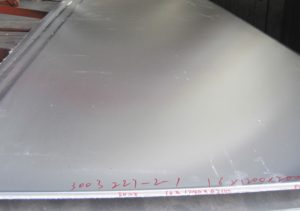Because of the different requirements of different industries and production processes on the aluminum plate, some industries such as the aluminum platehardness requirements change, it is necessary to require aluminum plate manufacturers in the production process of aluminum plate hardening. At present, there are two main methods for aluminum plate strengthening in the industry, which are processing and strengthening.

1. Aluminum plate machining aggrandizement
Machining aggrandizement is also called the cold work hardening is aluminum plate below the recrystallization temperature of cold deformation processing such as forging, rolling, drawing, stretching, cold deformation. Aluminum plate internal dislocation density increases, and entangled with each other and form the cellular structure, hinder dislocation motion. The greater the degree of deformation dislocation tangles, the greater the deformation resistance, the higher the strength. After the cold deformation strengthening the degree of deformation degree, deformation temperature and the properties of the material itself. Cold deformation under the same material at the same temperature, the higher the degree of deformation, the greater the strength, plasticity is lower.
2. Solid solution strengthening aluminum plate
The addition of certain alloying elements into the pure aluminum forms an infinite solid solution or a limited solid solution, which can not only obtain high strength, but also obtain excellent plasticity and good processability. The most commonly used alloying elements in the aluminum plate are copper, magnesium, manganese, zinc, silicon, nickel and other elements. General aluminum alloy to form solid solution, limited such as Al-Cu, Al-Mg, Al-Zn, Al-Si, Al-Mn and other two type alloys form limited solid solution, and has higher solubility can greatly limit the effect of solid solution strengthening.
After strengthening the aluminum plate, its hardness performance will be significantly improved, but its hardness cannot be promoted. When you reach the upper limit of hardness, no matter what method, cannot continue to improve the hardness of aluminum, can only choose the basis of higher hardness.
Machining aggrandizement is also called the cold work hardening is aluminum plate below the recrystallization temperature of cold deformation processing such as forging, rolling, drawing, stretching, cold deformation. Aluminum plate internal dislocation density increases, and entangled with each other and form the cellular structure, hinder dislocation motion. The greater the degree of deformation dislocation tangles, the greater the deformation resistance, the higher the strength. After the cold deformation strengthening the degree of deformation degree, deformation temperature and the properties of the material itself. Cold deformation under the same material at the same temperature, the higher the degree of deformation, the greater the strength, plasticity is lower.
2. Solid solution strengthening aluminum plate
The addition of certain alloying elements into the pure aluminum forms an infinite solid solution or a limited solid solution, which can not only obtain high strength, but also obtain excellent plasticity and good processability. The most commonly used alloying elements in the aluminum plate are copper, magnesium, manganese, zinc, silicon, nickel and other elements. General aluminum alloy to form solid solution, limited such as Al-Cu, Al-Mg, Al-Zn, Al-Si, Al-Mn and other two type alloys form limited solid solution, and has higher solubility can greatly limit the effect of solid solution strengthening.
After strengthening the aluminum plate, its hardness performance will be significantly improved, but its hardness cannot be promoted. When you reach the upper limit of hardness, no matter what method, cannot continue to improve the hardness of aluminum, can only choose the basis of higher hardness.
No comments:
Post a Comment